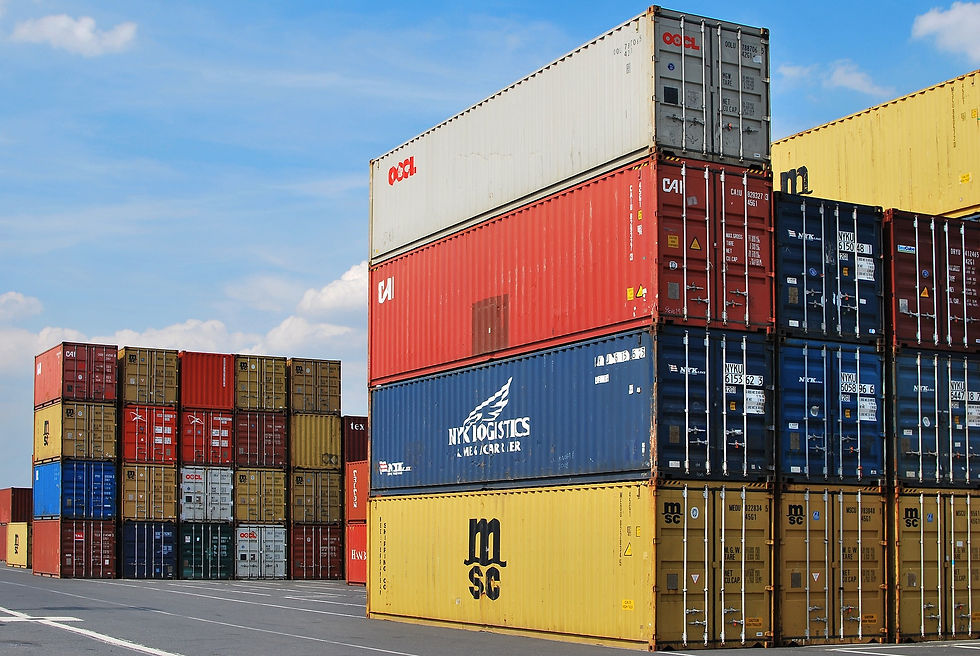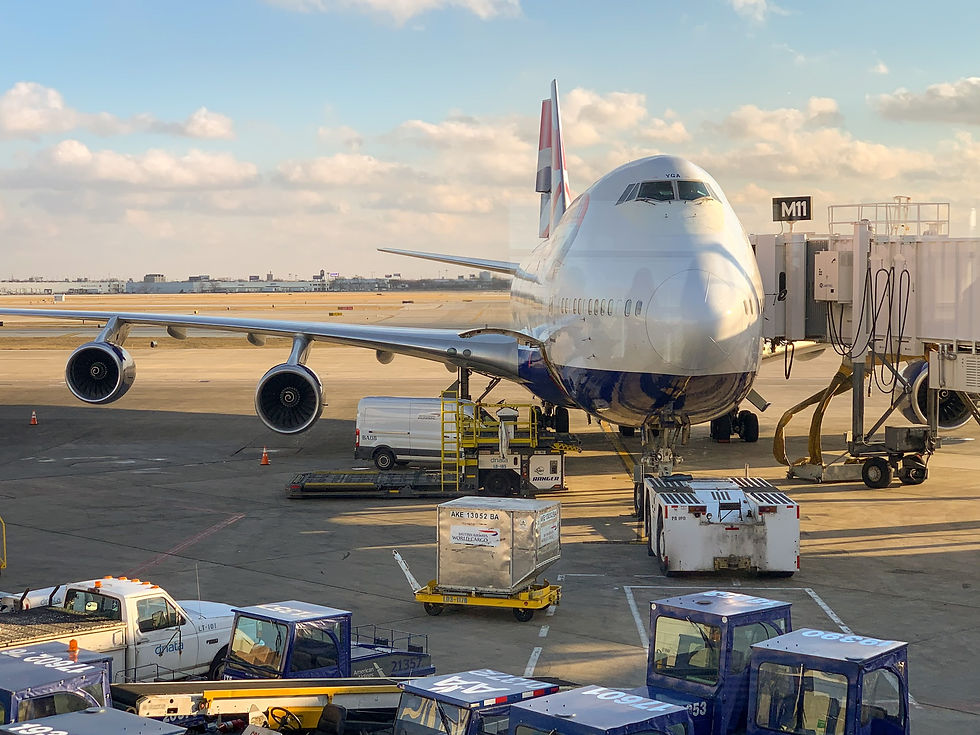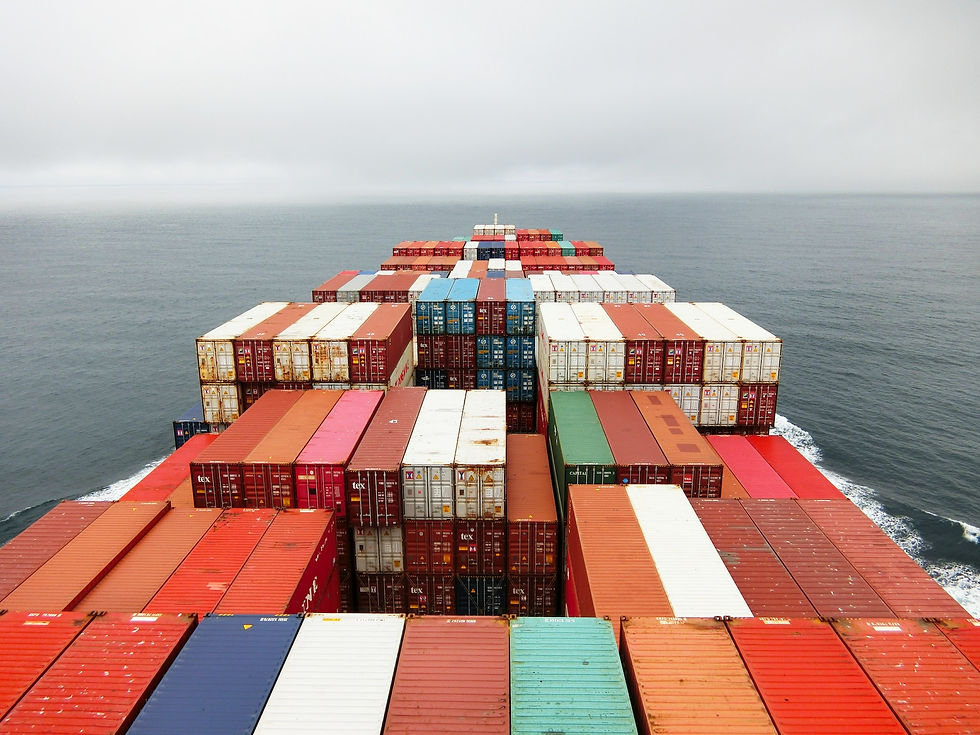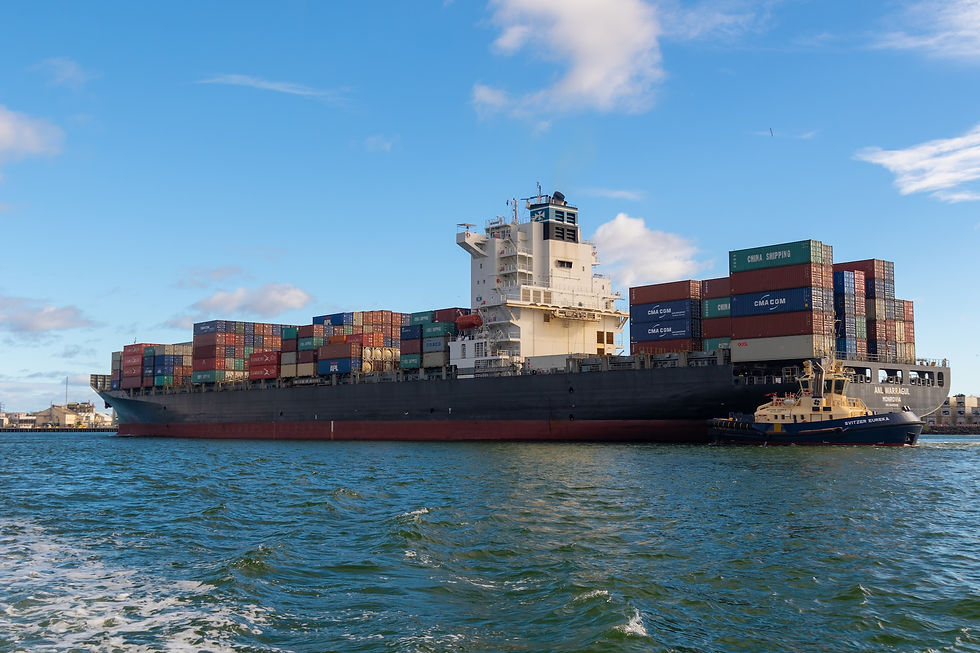Air Freight vs. Sea Freight: Which is Best for Your Business
- May 15, 2023
- 5 min read
If you want to make the best decisions for your business, you need to be familiar with air and sea freight traits. So, we've compiled a guide on air freight vs. sea freight: which is best for your business!

A More Comprehensive Explanation of Air Freight
Advantages of Air Freight
Air freight offers several advantages, making it a preferred logistics choice for businesses. Its greatest strength is its speed and time efficiency, ensuring quick delivery of goods. That is particularly beneficial for time-sensitive shipments or urgent orders. Secondly, air freight provides global reach and connectivity, allowing businesses to access markets and customers worldwide. It facilitates seamless international trade and helps expand business opportunities. Additionally, air freight offers enhanced security and reliability with stringent regulations and advanced tracking systems, minimizing the risk of loss or damage to goods. These advantages make air freight a valuable option for businesses seeking efficient and reliable transportation solutions.

Limitations of Air Freight
While air freight has numerous advantages, it also has certain limitations that businesses must consider. The primary drawback is the higher cost of air transportation compared to other modes. That can be a significant factor, especially for businesses with budget constraints or when shipping large volumes. Moreover, air freight may have limitations on bulky or heavy cargo due to weight and size restrictions imposed by airlines. Another aspect to consider is the environmental impact of air transportation, as it contributes to carbon emissions. Therefore, businesses with sustainability goals may need to evaluate alternative modes of transportation that align with their environmental objectives.
A More Comprehensive Explanation of Sea Freight
Advantages of Sea Freight

Sea freight, too, offers several advantages that make it an appealing choice for businesses. Firstly, its cost-effectiveness is a key advantage, especially for large shipments or bulk cargo. Sea freight can handle substantial volumes, resulting in lower shipping costs per unit. Secondly, sea freight is ideal for transporting bulky or heavy goods that may not be suitable for air transportation. It provides ample space and weight capacity, accommodating many products. Additionally, sea freight has a lower environmental impact than air freight, making it an eco-friendly choice for businesses focused on sustainability. These advantages make sea freight attractive for businesses seeking affordable and efficient transportation services.
Limitations of Sea Freight
While sea freight offers several advantages, it also has certain limitations that businesses should consider. The primary drawback is the longer transit times associated with sea transportation. Delays can occur due to weather conditions, port congestion, or customs procedures. That can pose challenges for businesses with time-sensitive shipments or those employing just-in-time inventory management. Another limitation is the dependence on sea routes and port infrastructure, which may limit access to certain regions or result in additional transportation costs for inland destinations. Moreover, you should consider potential disruptions such as container loss or damage. Despite these limitations, sea freight remains a cost-effective and reliable option for many businesses.

Factors to Consider in Choosing Between Air Freight & Sea Freight
The Type of Cargo You're Handling
The first thing to consider when choosing between air freight vs. sea freight is the nature of your cargo. Fragile and sensitive cargo requires extra care and specialized handling to ensure its safe arrival. For example, experts from NYC Mini Storage recommend taking necessary precautions such as using proper packaging materials, securing items to prevent movement, and labeling packages as fragile. They advise businesses to communicate the nature of their cargo to freight forwarders, ensuring they have the expertise and equipment to handle delicate items. IT's also important to consider temperature-controlled options for perishable goods or goods sensitive to temperature fluctuations. By understanding the cargo's nature and seeking expert advice, businesses can make informed decisions when choosing a freight mode and safeguard their valuable shipments.
How Urgency and Time Sensitivity Impact Picking Between Air Freight & Sea Freight
Shipments' urgency and time sensitivity are significant factors to consider when choosing a logistics partner. If time is of the essence and swift delivery is crucial, air freight is the preferred choice due to its efficiency and speed. It ensures prompt transportation, making it suitable for time-sensitive orders or urgent shipments. On the other hand, sea freight can be viable if time constraints are more flexible, offering cost savings for larger volumes despite longer transit times. Businesses should carefully assess their time requirements and align them with the capabilities of different freight modes to ensure timely delivery and efficient supply chain management.
The Cost Considerations of Air Freight vs. Sea Freight
Cost considerations play a crucial role in choosing air freight over sea freight or vice-versa. Budget constraint and cost-effectiveness are key factors to evaluate, after all. Air freight, although faster, generally comes with higher costs, making it suitable for urgent or high-value shipments. On the other hand, sea freight offers significant cost savings for businesses shipping large volumes or bulky goods, despite longer transit times. You can leverage economies of scale to reduce the cost per unit. Businesses must analyze their budget, shipment size, and frequency to determine the most cost-effective option.
Geographic Reach and Accessibility
Geographic reach and accessibility are more important factors when selecting a freight mode. Businesses operating in landlocked regions or remote locations may face challenges with certain modes of transport. Air freight offers the advantage of global connectivity, making it accessible to almost any location with an airport. However, sea freight can be more limited regarding port accessibility and may require additional inland transportation. Businesses must evaluate their specific geographic requirements and assess the availability of transportation infrastructure.
Environmental Impact and Sustainability
When choosing between air and sea freight, the final consideration is environmental impact and sustainability. These considerations are becoming increasingly important factors in choosing a freight mode. Businesses recognize the need to reduce their carbon footprint and opt for eco-friendly transportation options. While air freight is known for its speed, it also contributes to higher carbon emissions than sea freight. Sea freight has a lower environmental impact, making it a more sustainable choice. Maintaining strong relationships with carriers prioritizing sustainability ensures businesses align their shipping practices with their environmental goals. By considering the environmental impact of freight modes, businesses can make responsible choices that contribute to a greener supply chain and a healthier planet.
Your final decision on air freight & sea freight
With our guide on air freight vs. sea freight, you can come to a decision on which is best for your business. Overall, both modes of transportation have their own unique strengths for which they are recommended. You'll likely find yourself in a position where you'll need both, and undoubtedly in combination with ground transport leading up to departure and in the last miles. That's where you can count on CPL!






























Comments